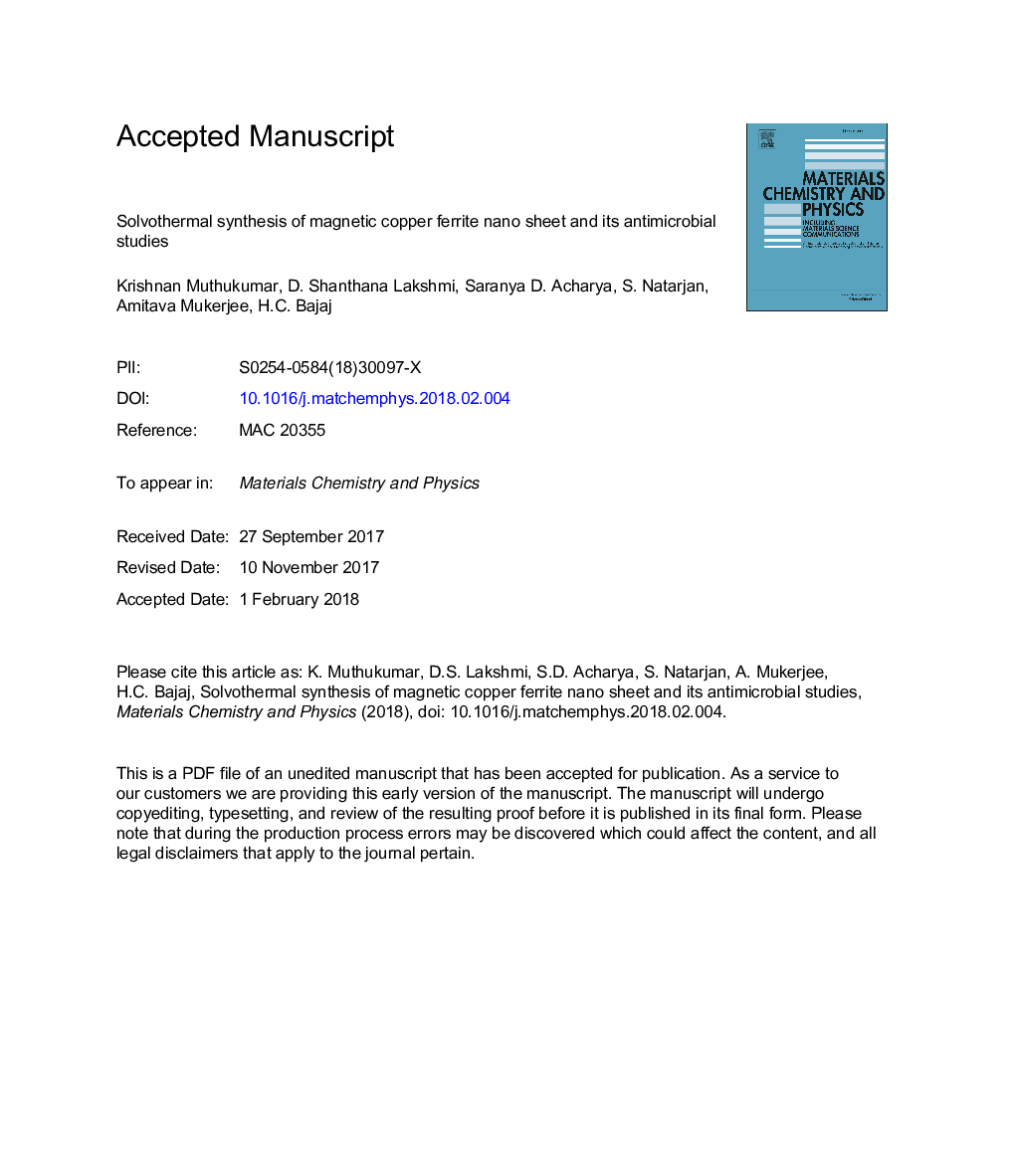| Article ID | Journal | Published Year | Pages | File Type |
|---|---|---|---|---|
| 7921928 | Materials Chemistry and Physics | 2018 | 21 Pages |
Abstract
Carbon embedded magnetic ferrite materials are highly active, stable and being widely used in catalysis and pollution control. The carbon containing magnetic copper ferrite was synthesised by solvothermal decomposition method using precursor derived from e-waste. The prepared material was characterized by PXRD, FE-SEM, TEM, Raman, FT-IR, XPS, and NH3-TPD. During the solvothermal decomposition of Fe3(OCH3CH3COO)5·2CH3OH and Cu(CH3COO)2 in-situ generated CO2 would act as a reducing agent for M+3 to M+2 ions reduction and can also be used as carbon source. The as-synthesised copper ferrite (C@CF) was calcined at 400â¯Â°C was designated as CF. Both the materials were tested for antimicrobial activity against environmental microorganisms B. subtilis (gram positive, rod shaped) and P. aeruginosa (gram negative, rod shaped) at three exposure concentrations 50, 100 and 200â¯Î¼g/ml. The possible mechanistic aspects of the antimicrobial actions for CF and C@CF was studied by reactive oxygen species generation and cell membrane permeability assays. C@CF nanoparticles consistently showed significantly higher cytotoxic effects against the test species compared to the CF particles, and this was strongly corroborated by the reactive oxygen species generation and the cell membrane damage results.
Related Topics
Physical Sciences and Engineering
Materials Science
Electronic, Optical and Magnetic Materials
Authors
Krishnan Muthukumar, D. Shanthana Lakshmi, Saranya D. Acharya, S. Natarajan, Amitava Mukherjee, H.C. Bajaj,
